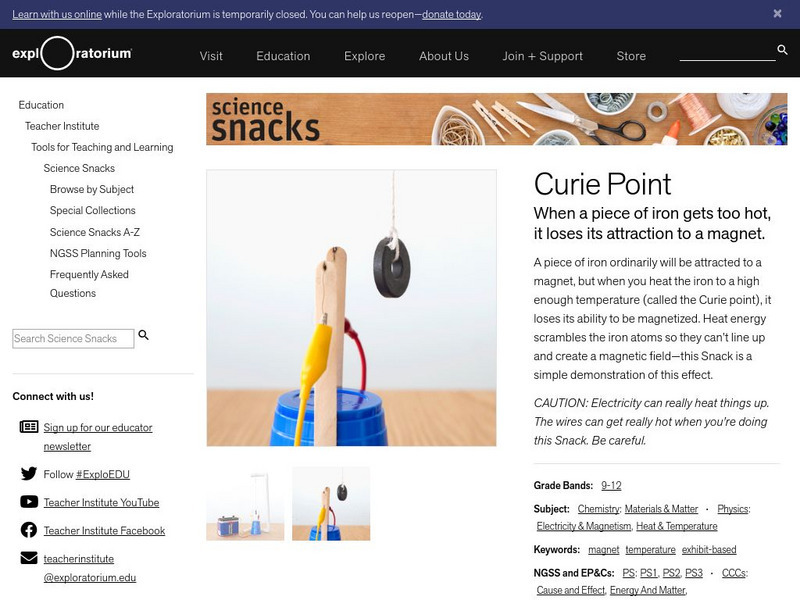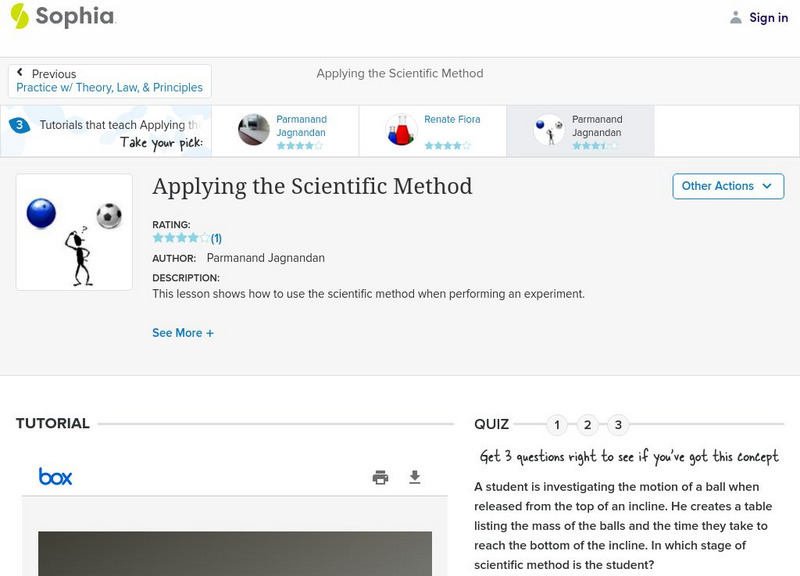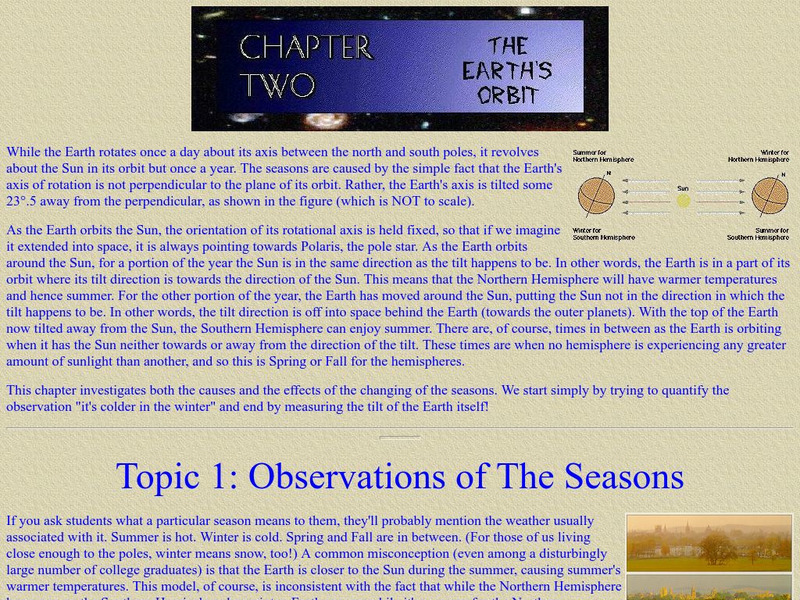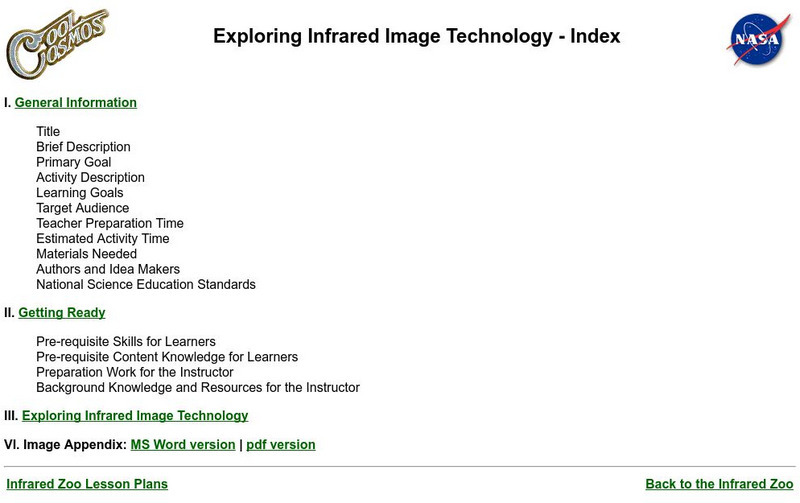Science Bob Pflugfelder
Science Bob: Make a Cartesian Diver!
This site presents a procedure for creating a cartesian diver, a miniature submarine which rises or sinks depending upon the water pressure within a closed bottle. The site also introduces basic concepts of water and air pressure.
Exploratorium
Exploratorium: Science Snacks: Curie Point
Did you know that a piece of iron can lose its magnetism if heated too high? There is a point called the Curie point when iron is heated to a high enough temperature that its iron atoms are scrambled and can't line up to form a magnetic...
Educaplus (Jesús Peñas Cano)
Educaplus: Masa Y Peso
Is the mass the same as the weight? Try this little experiment to find out the answer.
Exploratorium
Exploratorium: Science Snacks: Magnetic Fruit: Push Me a Grape
An online activity which illustrates the magnetic property of diamagnetism associated with water. Contains a simple procedure and then a good explanation of the magnetic interactions that were displayed by the grapes.
Arizona State University
Arizona State University School of Life Sciences: Beetle Dissection
Have you ever wanted to see what is inside of a beetle? Each of the images provided here is from Mecynnorrhina torquata beetles unless otherwise specified. Students are able to dissect beetles with the scalpel tool to expose new parts of...
Other
Air Blaster: Smoke Ring Launcher
Steve Spangler shows how you can blow a cup off of your friends head and his or her papers off the desk with this "air blaster" or "AirZooka." Demonstrate that air does take up space and how air moves. What fun!
Sophia Learning
Sophia: Applying the Scientific Method
Learn how to use the steps of the scientific method to carry out a scientific investigation.
Harvard University
Eyes on the Sky, Feet on the Ground: The Earth's Orbit
Students perform many inquiry activities related to Earth's orbit. Included are recording daily temperatures, observing the sun's path over several weeks, tracking sunrise and sunset times, and angle of sunlight. Diagrams make lessons...
Discovery Education
Discovery Education: Science of Everyday Life: Cushion It! [Pdf]
Students investigate the best way to cushion wrap a sugar cube to protect it from a collision in this lesson plan. During their investigation, students learn about collisions and variables that affect collisions.
Discovery Education
Discovery Education: Science of Everyday Life: In the Mix [Pdf]
In this lesson plan, students use different types of filters to separate the mixture. This lab requires the students to use engineering skills to solve a real-world problem of filtering water.
Discovery Education
Discovery Education: Science of Everyday Life: Strong as Newspaper [Pdf]
In this lesson plan, students use their engineering knowledge to construct a structure made of newspaper. Students test the strength of their structure with weights! Lesson plan includes teacher and student instructions.
Bill Nye
Bill Nye: Float Your Metal Boat
This experiment from Bill Nye shows that breaking the surface tension of a body of water can provide enough energy to propel a boat (or an insect!).
PBS
Pbs Kids: Dragonfly Tv: The Show: Exercise and Memory
Can exercise really help our brain work better? This PBS site discovers if this is really true by taking you into the worlds of Jada and Maurna to find out.
Discovery Education
Discovery Education: Science of Everyday Life: Right Back at You! [Pdf]
What make a good reflective surface? In this lab, students will investigate different surfaces with a reflectivity tester. Lesson plan includes information for students and teachers.
Science is Fun
Science Is Fun: Layered Liquids
An investigation into what properties liquids have that enable them to sit in separate layers in a container.
Science is Fun
Science Is Fun: Build an Electric Motor
Instructions for how to build a simple electric motor.
Museum of Science
The P H Factor
A great place to introduce or expand learning about pH and acids and bases. Has activities for students, and teacher's guides to help with the activities.
CPALMS
Cpalms: Lafs.1112.rst.1.3: Follow Precisely a Complex Multistep Procedure
Find a collection of standards-aligned teacher and student resources where students follow procedural text.
Alabama Learning Exchange
Alex: Bloodstain Pattern Doesn't Lie
Students will formulate a hypothesis about the relationship (linear, direct, indirect, etc.) between the distance a drop of blood falls and the diameter of the splatter it makes. To test their hypothesis, the students will work...
Alabama Learning Exchange
Alex: Camouflage Predation Challenge
Through this simulation, learners will understand the role of camouflage in keeping animals from attracting attention of their predators. Using newspaper and patterned wrapping paper, students will construct two habitats. Learners will...
Alabama Learning Exchange
Alex: Building a Cell: Edible Cell Project
Students will create an Eukaryotic cell from materials that they can eat. Students will need to have a lesson on the types of Eukaryotic cells and its organelles before they complete this assignment. Students will construct these...
California Institute of Technology
Exploring Infrared Image Technology
This NASA lesson plan explores the technology of infrared imaging. Learners will use infrared images of everyday items to explore infrared technology.
California Institute of Technology
Infrared Zoo Lesson 3: The Invisible Zoo
How do biologists and zoologists use infrared technology to learn how warm and cold-blooded animals thermoregulate their internal body temperature? Have your students explore this phenomenon using this great lesson plan.
Biology 4 kids
Biology4 Kids: Quiz: The Scientific Method
Take this ten-question review quiz over the Scientific Method. Read more about each question after an incorrect answer is given.
Other popular searches
- Life Science Experiments
- Egg Science Experiments
- Hands on Science Experiments
- Space Science Experiments
- Food Science Experiments
- 5 Minute Science Experiments
- Simple Science Experiments
- Air Science Experiments
- Fun Science Experiments
- Earth Science Experiments
- Science Experiments Units
- Sea Life Science Experiments


















